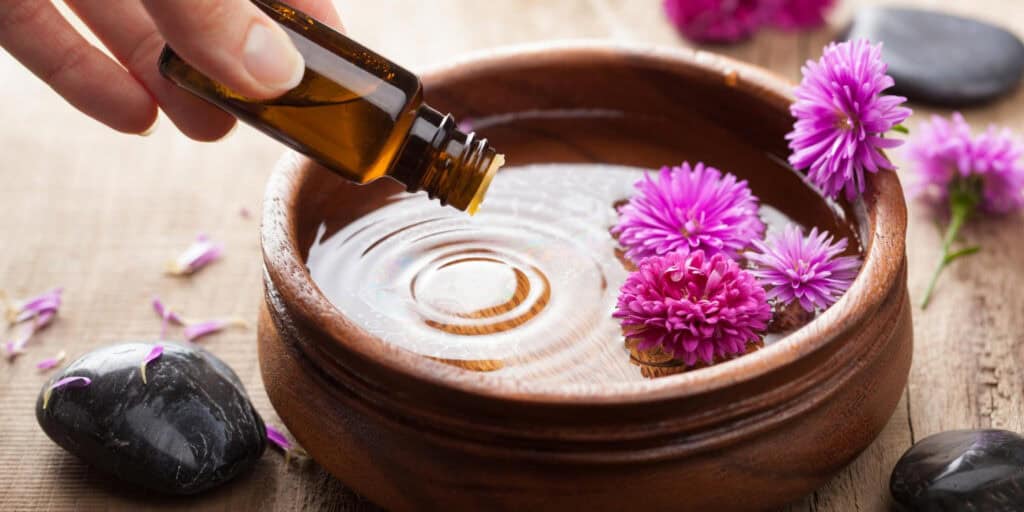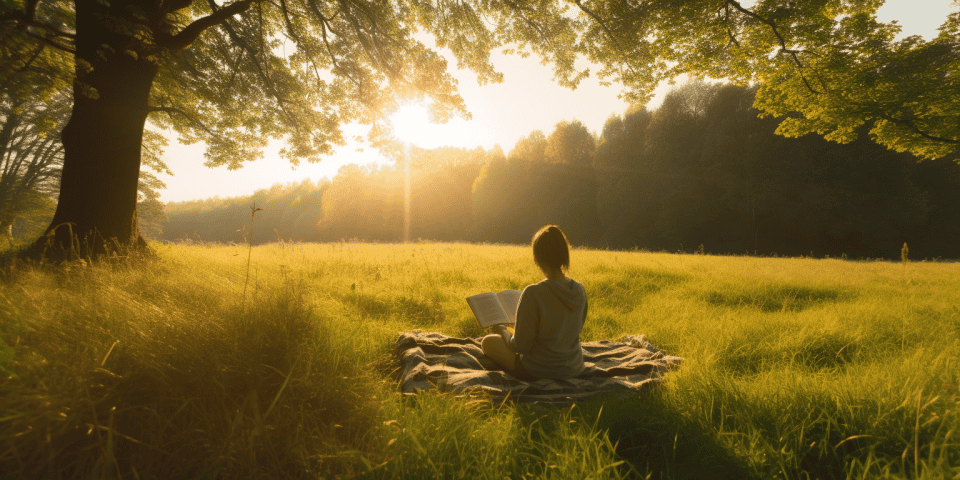We all want to be able to relax and de-stress, especially in a world that often feels overwhelming. But sometimes it can be difficult to know where to start when it comes to relaxation techniques. Luckily, there are some simple yet effective methods you can use to help reduce stress and unwind.
Three relaxation techniques are deep breathing, progressive muscle relaxation, and visualization. Deep breathing involves taking slow, deep breaths and focusing on the breath to calm the mind and body. Progressive muscle relaxation involves tensing and then releasing different muscle groups in the body to release tension. Visualization involves imagining a peaceful scene or situation to promote relaxation and reduce stress.
Relaxation doesn’t have to be complicated – it can be as simple as taking a few moments out of your day for yourself. Whether you’re looking for ways to manage everyday stress or just need some self-care, these relaxation techniques can help you create a sense of calm in your life.
From deep breathing exercises to guided meditation, let’s explore the power of relaxation and how it can help you find relief from stress.
Power of Relaxation
Relaxation is a powerful tool for restoring balance and creating greater wellbeing. According to the American Institute of Stress, 77% of people experience physical symptoms caused by stress.
Yoga, sleep hygiene, aromatherapy, biofeedback, and tai chi are all popular relaxation techniques that can help reduce anxiety and restore peace of mind.
Yoga is an ancient practice combining postures, breathing exercises, and meditation to create a sense of harmony between body and mind.
Sleep hygiene involves practices such as avoiding screens before bedtime or engaging in calming activities like reading to promote better sleep quality.
Aromatherapy uses essential oils to evoke feelings of calmness and relaxation.

Biofeedback is a technique used to identify bodily sensations associated with stress so that it can be managed more effectively.
Tai chi is a form of martial arts which combines slow movements with meditation to cultivate mindfulness and inner peace.
From gentle movement to intentional breathing patterns, there are many ways to access a relaxed state of being.
Deep Breathing
Deep breathing is a simple and effective relaxation technique with many scientifically proven benefits. It helps to reduce stress, improve concentration, and even lower your heart rate. This is a great way to relax the body and mind, while enjoying nature and incorporating self care into your lifestyle.
Here are three ways to use deep breathing for relaxation:
- Aromatherapy: Essential oils can be used to enhance the effects of deep breathing by providing an aromatherapy experience. Lavender, chamomile, rosemary, or sandalwood are some popular essential oils for relaxation.
- Yoga poses: Simple yoga poses combined with deep breathing can help you relax more deeply and make the most of each breath. Try basic stretching poses such as downward facing dog or child’s pose with your breath in mind for extra relaxation effects.
- Lifestyle changes: Making small changes in your daily life can help you incorporate deep breathing into moments when you need it most. For example, take five slow breaths in the morning before getting out of bed or practice mindful breathing during stressful situations throughout the day.
By focusing on your breath, you can create a sense of peace both inside and out that will help lead to greater relaxation in everyday life. With these tips in mind, you’re one step closer to mastering the art of deep breathing!
Meditation
Yoga, aromatherapy, and guided imagery are some of the oldest tools in the relaxation techniques tool kit. For centuries, humans have used these techniques to cultivate inner peace and ease stress. These strategies have been embraced anew in modern times for their proven efficacy in promoting both physical and mental wellbeing.
Today’s health-conscious individuals can make use of several relaxation methods to reduce stress levels like Autogenic Training, Music Therapy, Yoga, Aromatherapy and Guided Imagery.
| Technique | Description |
|---|---|
| Autogenic Training | Relaxing your body through focusing on certain sensations or phrases while sitting or lying down. |
| Music Therapy | Listening to calming music that helps reduce stress levels. |
| Yoga | Practicing yoga postures which helps to relax the mind and body. |
| Aromatherapy | Inhaling essential oils that induce relaxation and a sense of calmness. |
| Guided Imagery | Visualizing relaxing images in your mind to help reduce stress levels. |
By exploring these various relaxation techniques, we can create an individualized wellness plan that helps us reach our goals of achieving greater inner balance and wellbeing.
Together with proper nutrition, exercise, and adequate rest, we can create a life filled with joy and vitality!
Mindfulness
Mindfulness is a practice that can help bring a sense of balance and clarity to our lives. It involves consciously bringing awareness to the present moment and being mindful of our thoughts, feelings, and physical sensations.
Practicing mindfulness can be an effective way to reduce stress, increase self-awareness, and promote relaxation. Some simple techniques for becoming more mindful include positive self talk, listening to relaxation music, practicing yoga poses, using aromatherapy oils, and engaging in guided imagery.
Positive self talk is a great way to reduce stress and increase positive emotions by recognizing your strengths and inner resources. Listening to calming music can also be incredibly helpful in regulating emotions and promoting relaxation. Yoga poses are ideal for improving posture while simultaneously alleviating anxiety; this is because they combine both physical movement with breath work.
Aromatherapy oils have also been found to be beneficial for relieving tension; lavender oil is often used as it’s known for its calming properties. Lastly, guided imagery is a useful tool for achieving relaxation; this technique involves creating mental images that evoke peaceful feelings or scenes from nature.
Mindfulness encourages us to live more fully in the moment – allowing us to take control of our thoughts and feelings rather than letting them consume us. As we move forward into the world of visualization, it’s important to remember the power of staying present in order to create lasting peace within ourselves.
Visualization
Mindfulness is a powerful tool for managing stress, but there are other relaxation techniques that can be used to achieve greater peace of mind.
For example, Zara, a busy businesswoman in her mid-30s, found the combination of creative visualization and guided imagery to be incredibly helpful in reducing her stress levels.
Creative visualization involves imagining yourself in a peaceful place such as a beach or garden and mentally focusing on the sights, sounds and smells of the environment.
Guided imagery is when you use your imagination to visualize yourself doing something calming such as reading a book or taking a walk in nature.
Additionally, art therapy and aromatherapy can also be beneficial in terms of relaxation.
Art therapy combines creativity with relaxation while aromatherapy uses essential oils to promote feelings of serenity.
Finally, positive affirmations can help manage the inner dialogue in our minds by providing us with an uplifting message which can further reduce stress levels.
With these tools at our disposal, we can begin to make progress towards finding deeper states of relaxation.
Progressive Muscle Relaxation
Progressive Muscle Relaxation is a simple yet effective relaxation technique that can be used to help reduce stress, tension, and feelings of anxiety. It is based on the principle that when one muscle group is tensed and then relaxed, it helps the body achieve an overall sense of relaxation.
This technique involves focusing on different parts of the body and alternately tensing and relaxing them. The aim is to notice the difference between tension and relaxation in each part of the body. It can be done sitting or lying down in a quiet space and takes around 10-20 minutes to complete.
In addition to progressive muscle relaxation, there are a variety of other relaxation techniques such as yoga poses, aromatherapy oils, sound therapy, tai chi and hydrotherapy which can also be used to help bring about a feeling of deep relaxation.
Yoga poses are great for calming both mind and body while aromatherapy oils can be used to create an atmosphere conducive for deep relaxation. Sound therapy makes use of soothing sounds like nature sounds or music while tai chi combines gentle movements with breathing patterns to create harmony between mind, body and spirit. Hydrotherapy can also be beneficial as it enables you to take time out from your daily life by immersing yourself in warm water which helps relax tense muscles.
Relaxation techniques such as progressive muscle relaxation along with yoga poses, aromatherapy oils, sound therapy, tai chi and hydrotherapy can all be used as part of an overall plan for reducing stress levels and achieving emotional balance.
By developing an awareness of how our bodies respond under stress we can learn how to more effectively manage our emotions during difficult times. With practice these techniques become easier to implement into our everyday lives so we can begin to experience greater levels of peace and calmness no matter what life throws at us.
Frequently Asked Questions
What Are The Benefits Of Relaxation Techniques?
Relaxation techniques offer a plethora of benefits to those seeking to reduce stress and anxiety.
From breathing exercises to progressive muscle relaxation, guided imagery, aromatherapy, and meditation practice, these techniques have been proven to improve mental health, lower blood pressure, reduce physical tension and pain, enhance self-confidence, improve sleep quality, and even increase overall happiness.
Anecdotally speaking, many people who have embraced these practices have found that they can live their life with greater awareness and mindfulness.
In short: relaxation techniques are a powerful antidote to the chaos of modern life.
Are There Any Risks Associated With Relaxation Techniques?
While relaxation techniques such as meditation, deep breathing, aromatherapy, yoga, and Tai Chi can provide numerous benefits to both physical and mental health, it is important to be aware of the potential risks associated with these activities.
Just like any form of exercise, certain relaxation techniques may present safety risks if not practiced properly.
For example, some poses used in yoga or Tai Chi can cause injury if done incorrectly.
Meditation can also lead to lightheadedness or dizziness if practiced for too long.
Therefore, it is always important to research the safety guidelines for each specific technique before getting started.
Are Relaxation Techniques Appropriate For Children?
For parents, it can be a tricky balancing act to determine which relaxation techniques are appropriate for their children.
Positive affirmations, deep breathing exercises, guided imagery, mindfulness meditation, and time management can all prove to be invaluable tools in helping kids find balance and peace.
These techniques have been proven to help reduce stress and anxiety in young people, while also providing them with the freedom to explore their creativity and emotional intelligence.
With practice, these strategies can even empower children to become more resilient and independent by teaching them how to manage their emotions more effectively.
How Long Should I Practice Relaxation Techniques?
Practicing relaxation techniques can be an effective way to reduce stress and improve your overall wellbeing. How long you should practice these techniques depends on the individual and the type of technique being used.
Breathing exercises, meditation practices, yoga poses, mindful eating, and visualization techniques can all be beneficial for both adults and children.
Taking 5 to 10 minutes per day to practice these relaxation techniques can make a big difference in how you feel physically and mentally. With regular practice, you’ll begin to experience greater freedom from stress and anxiety while enjoying improved mental clarity.
Are There Any Lifestyle Changes I Should Make To Enhance The Effects Of Relaxation Techniques?
Making lifestyle changes to enhance the effects of relaxation techniques is an important part of stress management.
Incorporating mindful eating, positive affirmations, deep breathing, and yoga poses into your daily routine can be beneficial in reducing stress levels and improving overall wellbeing.
Mindful eating can help you become more aware of your body’s needs and how certain foods affect your mood.
Positive affirmations are a great way to remind yourself to stay positive and focus on the good things in life.
Deep breathing exercises can help you relax and reduce stress levels quickly.
And lastly, trying out some gentle yoga poses helps to promote physical and mental relaxation.
Making small lifestyle changes like these can help you enjoy the full benefits of relaxation techniques.
Conclusion
The relaxation techniques discussed in this article are a great way to reduce stress and improve mental health. You should give these practices a try if you’re looking for a natural and healthy way to reduce your stress levels.
By using relaxation techniques regularly, you can experience improved focus, better sleep, and overall better mental health.
But before you start using these techniques, it’s important to consider the appropriate length of practice and any lifestyle changes that might help enhance their effects. It’s also important to be aware of any risks associated with relaxation techniques—especially when it comes to children who may be more sensitive to their effects.
So, are relaxation techniques right for you? That will depend on your physical and mental state as well as your personal preferences. Why not give one of the techniques mentioned here a try and see how it works for you?
Sources
https://www.therecoveryvillage.com/mental-health/stress/stress-statistics/




